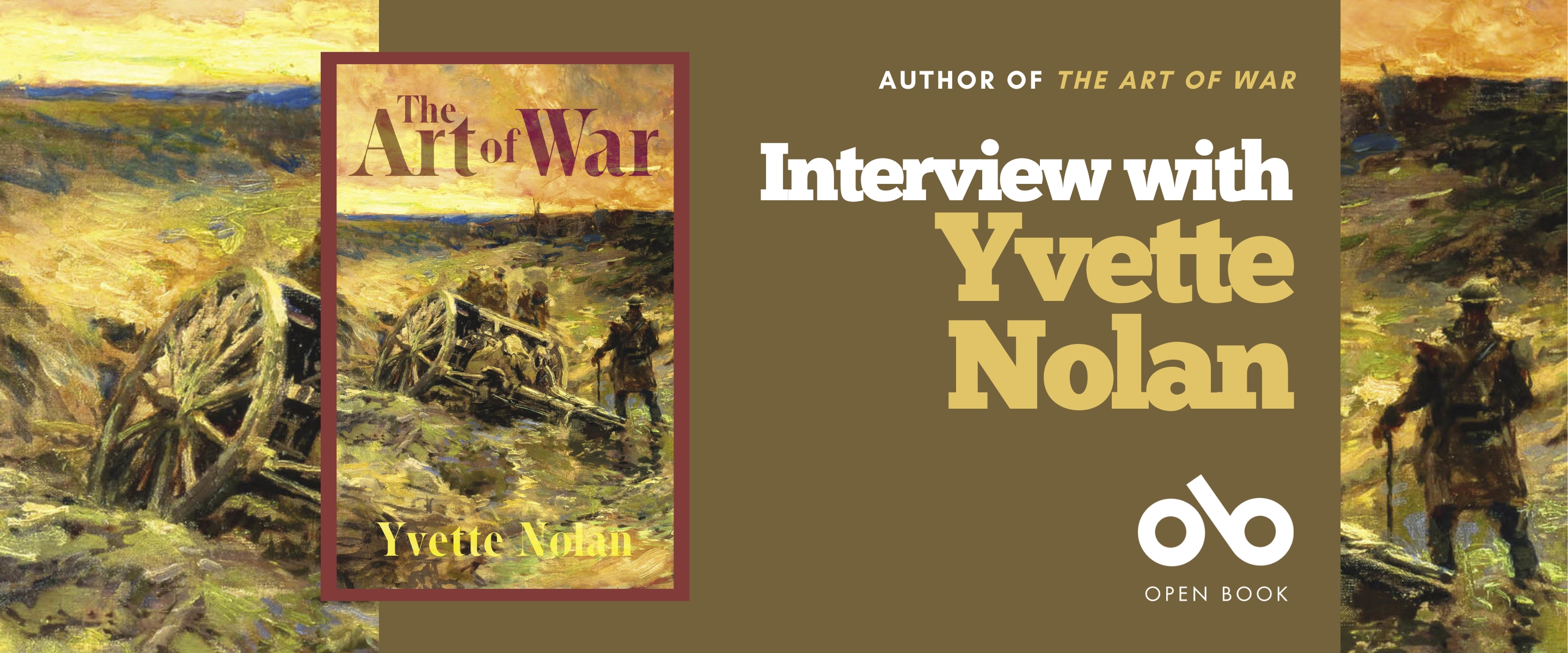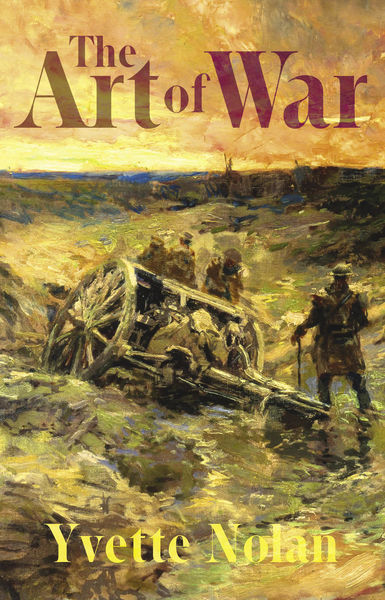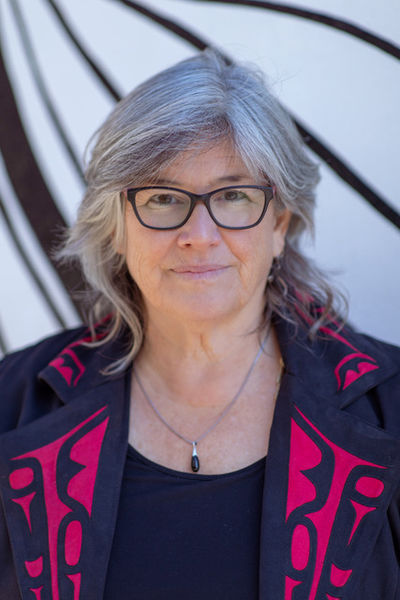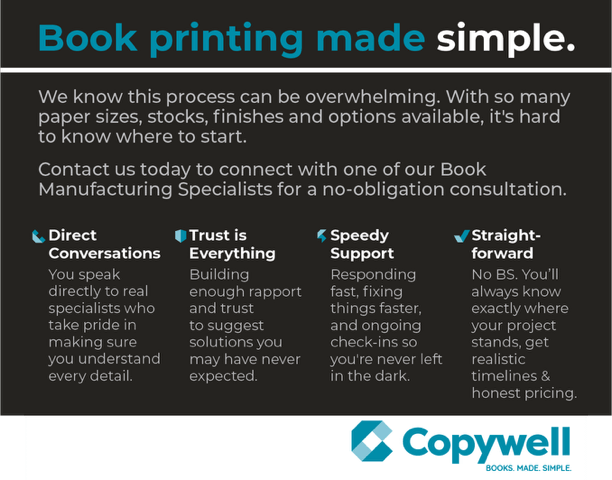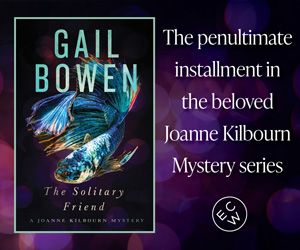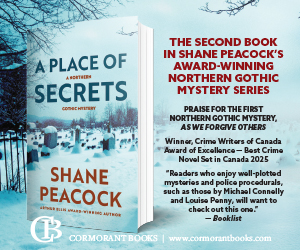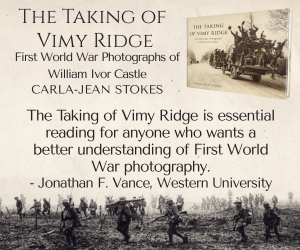An Artists Paints the Chaos of the Battlefield in THE ART OF WAR by Yvette Nolan
What happens when the battlefield becomes a canvas? In The Art of War (Playwrights Canada Press), acclaimed playwright Yvette Nolan reimagines the Second World War through the eyes of Nick, a Canadian artist pressed into service not with a rifle, but with a paintbrush. Charged with translating the brutality and heartbreak of war into art, Nick moves through a shifting landscape of soldiers, refugees, and dazzling showgirls, discovering along the way that what he creates is as much about his own reckoning as it is about the conflict around him.
As one of Canada’s most vital theatrical voices, Nolan has built a career on blending sharp wit with deep empathy, and The Art of War is no exception. The play is a moving and often surprising meditation on the place of artists in moments of chaos and upheaval. By turns funny, haunting, and illuminating, it reminds us that in times of destruction, those who hold fast to creativity may offer a different kind of survival: one rooted in truth, beauty, and resilience.
Check out this special On Stage interview with the author!
Open Book:
Do you remember an early experience that you believe contributed to your becoming a playwright?
Yvette Nolan:
I’m a theatre rat, I have done almost anything to stay in the theatre. I stage managed, lay dance floor, hung lights, coordinated props and costumes… I was working at the first Winnipeg Fringe Festival as an assistant to producer Larry Desrocher, and so I saw all the plays in the festival. I saw some great stuff, but most of it was not great, and I thought, surely I can do better than that, and so I wrote my first play, BLADE, at my Fringe computer, after hours. And I have been trying to do better ever since. Turns out writing plays is hard, it is a practice, and I have been practicing for 30-odd years.
OB:
What is the first play you remember being affected by, and how did you happen to see or read it?
YN:
I don’t really remember the ones from when I was a child but as an adult, there are so many plays that affected me, kept me in theatre, showed me what we could do on the stage. Tomson Highway’s The Rez Sisters and Margo Kane’s Moonlodge showed me that we could use this form to tell our stories. The first time I saw Judith Thompson’s Crackwalker at the Edmonton Fringe in the 1980’s, I could not move from my seat. Martin Sherman’s Bent at MTC’s Warehouse in 1980 or ‘81similarly wrecked me. Tom Stoppard’s The Real Thing at MTC in 1985 showed me that you could write about the biggest things – love, and writing, and pop music, and ego – with wit and humour and the lightest of touches. Each of these plays – and there are so many more, but when you ask about plays that affected me, these are the first ones that come to mind – taught me something about theatre, its uses, its power. They taught me about courage and truth.
OB:
Is your writing process totally page-based, or do you sometimes speak dialogue aloud (alone or with others) or try physically blocking out scenes while writing to work through things?
YN:
Generally, when I am writing a play, once the characters start appearing, they tend to speak for themselves. I hear them in my head, or I see them in the scene with each other, so I rarely speak dialogue aloud. But I love hearing actors on the work, and I learn so much from hearing actors speak the words into the air. That’s where I hear what is clunky, what is missing, what is overwritten. I recently had a reading of a new work in progress – Unearthing – as part of Canadian Stage’s Festival of New Theatre, and it was so illuminating. I could hear what was working, could see where the play was going. What a gift. The exceptions are when I am working in a team, on a devised piece, or when I am scribing for a group. Then I will speak dialogue out loud, often in service of finding the voice for a character that some other creator has imagined into being. And when I was translating Shakespeare into contemporary English for the Play On! Shakespeare project, I often spoke the lines into the air, but that was largely about finding the rhythm. I worked very hard in my translations to keep the iambic pentameter, and the only way for me to do that was to “speak the speech… trippingly on the tongue.”
Your CanLit News
Subscribe to Open Book’s newsletter to get local book events, literary content, writing tips, and more in your inbox
What has been your most unlikely source of inspiration?
YN:
I am always surprised when and how the idea for a play arrives. Sometimes I am just trying to work something out – with BLADE, my first play, I was infuriated by the representation of women, especially Indigenous women; twenty-five years later, with The Unplugging, I am still grappling with the same issue, but from a different place in time, as an aging woman who is no longer valued in the world. Other times, it’s like the muse just dumps on me; I wrote a play in the 90’s called Skin Deep, which was about one of Jeffrey Dahmer’s last victims, a young Asian man who had escaped and was returned to Dahmer by the police. One day I was driving, wondering how the police could have done that, and the play kind of landed in me. Again, I was grappling the correlation between skin colour, class, and one’s perceived value in a society. The idea for The Art of War was born of a visit to the Museum of Civilization in Gatineau in 2000 or 2001; I was staggered to learn that Canada had sent artists to capture the war with paints and brushes, charcoal and sketchbooks. I am anti-war, a peacenik, a dove, whatever label you choose, and yet the idea at the core of this exhibition would not let me go. What is the role of the artist in a time of conflict?
OB:
Are there themes, objects, or activities that you see cropping up repeatedly in your work that you are surprised by?
YN:
My first play, BLADE, was about a young woman who is killed by a man who is killing prostitutes and so is turned into a prostitute by the media. I was angry about the erasure of Indigenous women, about society’s perceived value of women, about who controls the narrative. Many of my plays after that were about women, could be labeled as social justice seeking. As the world began to burn, the apocalypse started to show up in my plays, which is not surprising. The Unplugging is post-some-kind-of apocalypse, the men in The Birds are fleeing some kind of breakdown, the lake is reclaiming the Toronto lakeshore in Unearthing. But the role of art and the artist in society is also becoming more present, in Unearthing, in The Theatre The Town, in The Art of War.
OB:
How would you describe the theatre and playwriting community in Canada? What strengths and weaknesses do you observe within the community?
YN:
We live in dangerous times. I believe that theatre is critical to the health of this place we currently call Canada, but like everything else, theatre is feeling the pressures of the world. Playwriting is especially challenged, as the resources dwindle, and many producers think that they must offer their audiences a steady diet of crowd-pleasers, spectacles, musicals, old chestnuts. But the preponderance of these plays tends to radically reduce the space for Canadian work, for new work. Producers begin to think of new work as risky, and that risk-averse attitude can spook an audience. And by not bringing our audiences along, by not offering them new work by new voices, we reinforce the idea that the old stuff is more valuable that the new.
It is ironic, in this age of “elbows up” and Canadian pride – I hesitate to use the word nationalist – that Canadian stories and Canadian artists are not more valued. But I look around the country and I see season after season with little to no Canadian content, very few new Canadian plays.
I have been championing new play development throughout my career, and I thought we would be further along by now, but I guess the economics, the fear, the circumstances – the pandemic and climate change – all have put a damper on new work.
That being said, there are many strengths within the community. We know each other, and we talk to each other. The size of the community – Canada is small, Canadian theatre is small, and the playwriting community is small – means that we can reach out to each other and talk about what work is in development, who are the emerging playwrights. There are a number of play development centres across the country, and a number of theatres that develop new work. As the resources shrink, we will need to be more strategic about how we spend them, to ensure that new work gets the support it needs so that it can reach the stage in the best possible shape, and go on from there to second and third productions. All of our leaders in play development centres and playwrights units and associations will need to advocate to funders, to theatres, to communities for new Canadian work.
OB:
How do you see theatre and playwriting changing and evolving at this point? What excites you about those changes as an artist?
YN:
The most exciting development for me in the last decade has been the growing awareness and openness to the stories of other voices, voices that were for so long absent from our stages. I know how challenging it has been to get Indigenous stories to the stage. Artistic directors thought “their audience” would not be interested in Indigenous stories, or the Indigenous plays they were willing to program reflected their idea of what Indigenous work was. With the Truth and Reconciliation Commission and the 94 Calls to Action, the institutions and the people leading them have become much more open to working together. Similarly, the Black Lives Matter movement and initiatives like We See You, White American Theater created space for more voices from more communities telling all kinds of stories. Black playwrights, Asian playwrights, playwrights from a multiplicity of communities began to be included on reading lists, in seasons, in playwrights’ units. Our stages began to look a lot more like our communities: diverse, complicated, rich.
OB:
What is the worst thing about being a playwright, and what is the best?
YN:
The best thing about being a playwright is the opportunity to write it better, to create new worlds that are better or more just than this one, or are extensions of this one that you share with an audience in the hopes of shaking them out of a received wisdom. I once heard the great Erik Ehn say that one of the roles of theatre is “uncovering the dead and reconstructing a history for a community.” That is one of the best things about being a playwright.
_____________________________________
Yvette Nolan is a playwright, dramaturg, and director. Her plays include Annie Mae’s Movement, The Unplugging, and The Birds. She has been writer-in-residence at Brandon University, Mount Royal College, Saskatoon Public Library, and McGill University, as well as playwright-in-residence at the National Arts Centre. Born in Saskatchewan to an Algonquin mother and an Irish immigrant father and raised in Manitoba, Yvette lived in the Yukon and Nova Scotia before moving to Toronto, where she served as artistic director of Native Earth Performing Arts from 2003 to 2011. Her book Medicine Shows about Indigenous theatre in Canada was published in 2015. She lives in Saskatoon.
